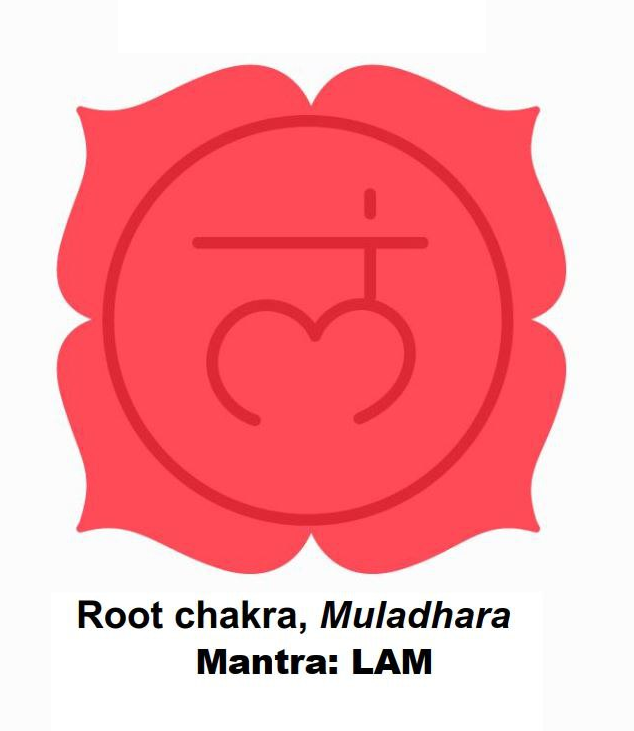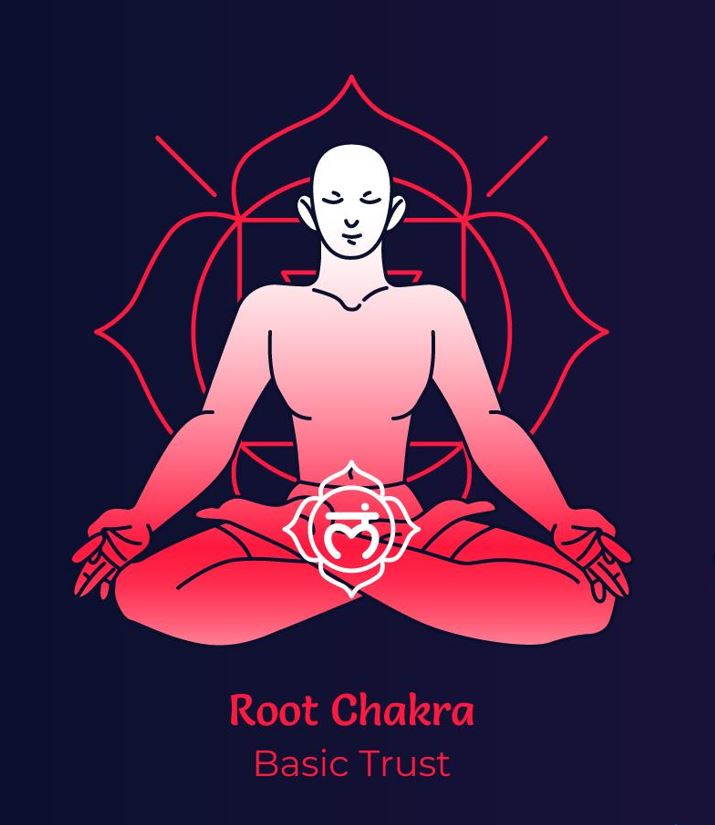Introduction to the Root Chakra
The Root Chakra, known in Sanskrit as Muladhara, is the first of the seven primary chakras in the human body. As the name suggests, it serves as the foundation of the chakra system, anchoring us to the earth and cultivating a sense of stability and security. Located at the base of the spine, it governs our basic needs and our sense of grounding.
The Significance of Muladhara
This chakra is associated with the element of earth, reflecting its role in our survival instincts and our connection to the physical world. When the Root Chakra is balanced, we feel secure, supported, and present in our environment. It affects our vitality, passion for life, and our basic survival instincts, such as food, shelter, and safety.
Visual Overview of the Chakra
The left image displays the symbol of the Root Chakra (Muladhara), and the right image shows its position at the base of the spine.


Symptoms of Imbalance
An unbalanced Root Chakra can manifest as feelings of insecurity, aggression, or anxiety. Physically, it can lead to problems in the lower body, such as lower back pain or discomfort in the legs or feet.
Practices for Balancing the Root Chakra
Balancing Muladhara can be achieved through various practices:
- Yoga poses such as Mountain Pose, Warrior I, and Child’s Pose.
- Meditation focused on the color red or envisioning roots growing from your body into the earth.
- Reciting the seed mantra “LAM” during meditation or chanting.
- Engaging with nature by walking barefoot on grass or soil to reconnect with the earth’s grounding energy.
Conclusion
A balanced Root Chakra is essential for a harmonious life, providing the stability needed to explore higher states of consciousness. By incorporating Root Chakra practices into your routine, you nurture your inner security and strength, allowing your entire energy system to flourish.




